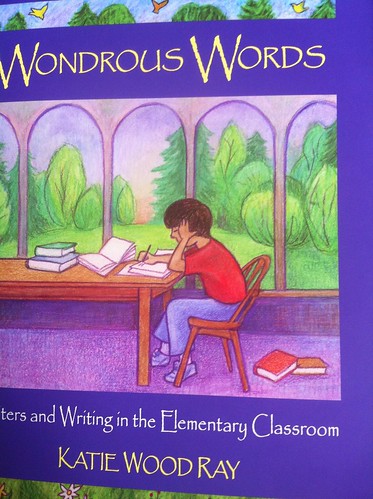I brought some books with me to leave at the Durban Writing Project site and I've been rereading this Katie Wood Ray classic. Even if you don't teach in the elementary, you won't go wrong with this book that balances pedagogy with practicality.
One part talks about selecting books to read aloud, not only to model good reading, but to get the sound of good writing into students' heads (79). For as many pieces that are chosen for students that will appeal to them as readers, we need to fill their diet as writers by including books with stunning, rereadable language.
What pieces do you gravitate towards as read alouds with beautiful language?
After 20 years of teaching, I never get tired of Sandra Cisneros' House on Mango Street. Her imagery still leaves me breathless. I also enjoy the different kind of imagery in Juliet Kono's "love" poem "Tongue" although I admit to not reading the last line because it doesn't server my purpose for sharing it in the first place. I like to read local poems so that students see that their voices are valid and publishable without trying to sound like someone they're not
What's on your read aloud list.
My dissertation proposal as a culture-based education (CBE) version of Chopped All-Stars Please indulge my need for metaphors and analogies to make sense of my world. This is Part 1 of 4 blog posts to clarify my thinking on my proposed dissertation topic. How will this study work? Gather strong chefs, leaders and innovators in their own right and challenge them to create synergistic culinary masterpieces in the CBE Project, a professional development program. change chef to teacher; change culinary masterpieces to culture-based education-infused practices and curriculum ) The parameters: time (Kamehameha Hawaiʻi 4-week course with deadlines for teachers' own action research and learning portfolio to follow) key ingredients ( CBE practices , moenahā framework, makawalu , and the National Writing Project program model) the course (teachers' own content area and current curriculum) The question: How doe...

Comments
One of the teachers at LWP has a critical question
"Does place based writing motivate students?" --
Thought about students who have traveled elsewhere,
how they can compare and contrast Hawaii to some-
place else. Hopefully they'll appreciate this place more? Then thought of your PhD research, wonder if
it matters if students have traveled out of Hawaii?
Will they be more motivated to find sanctuary in this
place? Hope you had a great trip. LWP ladies are
wondrous writers. Mahalo for this opportunity.